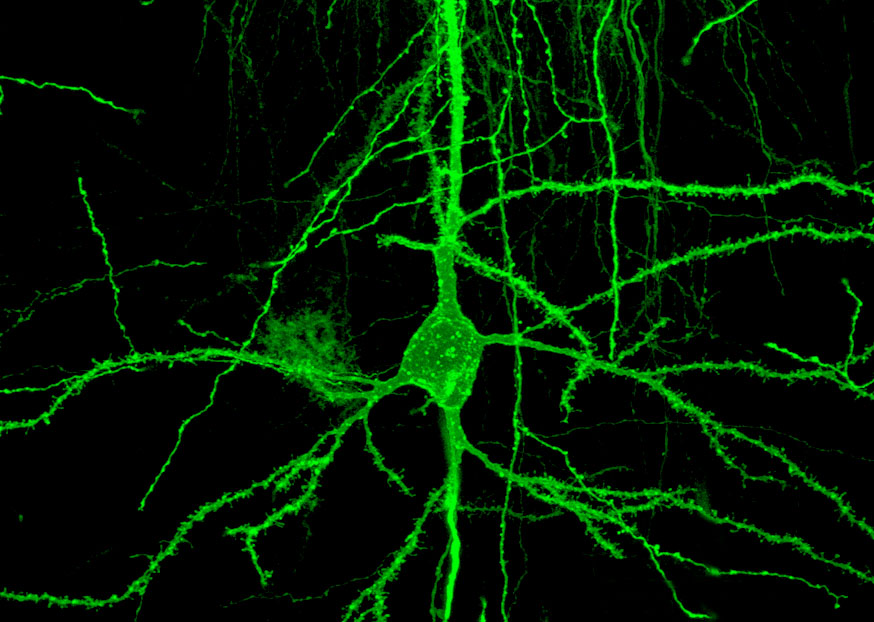Neuroscience research areas

Learning and memory
Understanding the cellular, molecular and cognitive mechanisms underlying learning and memory is one of the greatest challenges in neurobiology. A deeper understanding of these mechanisms may ultimately result in new approaches for establishing, maintaining, and even enhancing brain cells, and their connections, as we age.
Synaptic function
It's estimated that there are approximately 100 trillion synaptic interconnections between the 100 billion neurons in the human brain, reflecting the fundamental importance of the synapse for neural function.
Since the synapse is the element linking neurons together into circuits, it follows that synaptic dysfunction lies at the centre of most neural disorders. This results in enormous societal and economic costs.
Not surprisingly, synapses are a primary therapeutic target for interventions to treat neurological problems from schizophrenia to addiction to chronic pain.
Developmental neuroscience
Cellular and cognitive mechanisms involved in normal, day-to-day neurological activity are hugely complex. So too are the mechanisms that determine the formation and maturation of the neural network responsible for this activity.
The cellular and cognitive branches of developmental neuroscience at UVic comprise two very distinct areas, using different experimental approaches, systems and techniques. As basic research in these areas increases our knowledge of neurodevelopment, a bridging of the core cellular and cognitive branches of neuroscience will provide tremendous insight into the understanding and potential treatment of neurodevelopment disorders.
Sensory systems
Areas of expertise in sensory systems at UVic include cellular development, synaptic transmission and cognition. In addition to providing fundamental knowledge about the biology of sensory systems, this knowledge is essential for the design of therapies or cures for sensory disorders. Because sensory systems tend to provide a tractable, easily-controlled experimental system, the knowledge acquired from this type of research is often very useful for our understanding of other neuronal processes.
Disease/injury
A key area of the neuroscience program that brings together the largest number of permanent and associate neuroscience faculty is focused on neuronal-related disease or injury.
Ten permanent and seven associate faculty members from Biology, Psychology, Division of Medical Sciences and the School of Exercise Science, Physical Health and Education have research interests and/or expertise directly related to some form of neuronal pathology.
Cognition and neuropsychology
Our goal is to understand the nature of the representations and processes that give rise to mental events, and the influence of memory for past mental events on subsequent experience and behaviour. We adopt a variety of empirical approaches to this enterprise, including naturalistic studies of children and adults, experiments conducted in laboratrory contexts, brain imaging, case studies of brain-damaged patients, and computational modeling.
Neuroimmunology
The bidirectional relationships between the body and the central nervous system are mediated by the immune system. Microglia, which are the resident immune cells of the central nervous system, play a particularly important role in the immune system’s development, maturation, function, and plasticity. Studying how these immune cells normally exert their beneficial functions – and how these functions become compromised by trauma/injury, disorder/disease, and aging – will allow researchers to develop novel therapies targeting the mediators of neuroinflammation to reduce pain, as well as to preserve or restore learning, memory, cognitive flexibility, stress resilience, sleep patterns, metabolism, and overall adaptation.
